Siblings Gratian, Galla Name Valentinian II Cousins Valentinianus Galates | Dynasty Valentinian Grandparents Gratian the Elder Parents Valentinian I, Justina | |
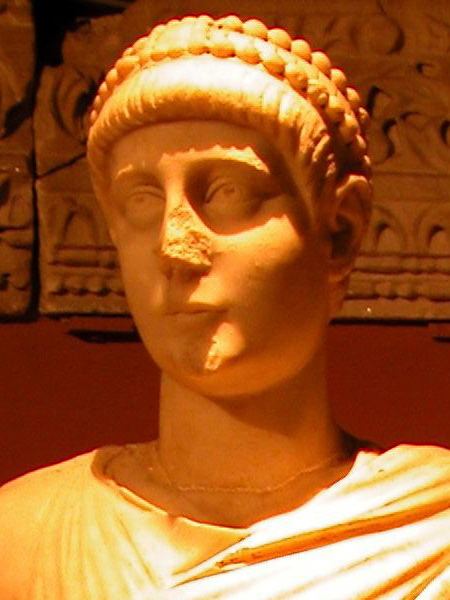 | ||
Reign 22 November 375 – 15 May 392 Similar People | ||
Valentinian ii roman emperor 375 392ad biography and buy real genuine authentic ancient roman coins
Valentinian II (Latin: Flavius Valentinianus Augustus; 371 – 15 May 392), was Roman Emperor from AD 375 to 392.
Contents
- Valentinian ii roman emperor 375 392ad biography and buy real genuine authentic ancient roman coins
- Valentinian II
- Early life and accession 371375
- Reign from Milan 375387
- Reign from Vienne 388392
- Significance
- References
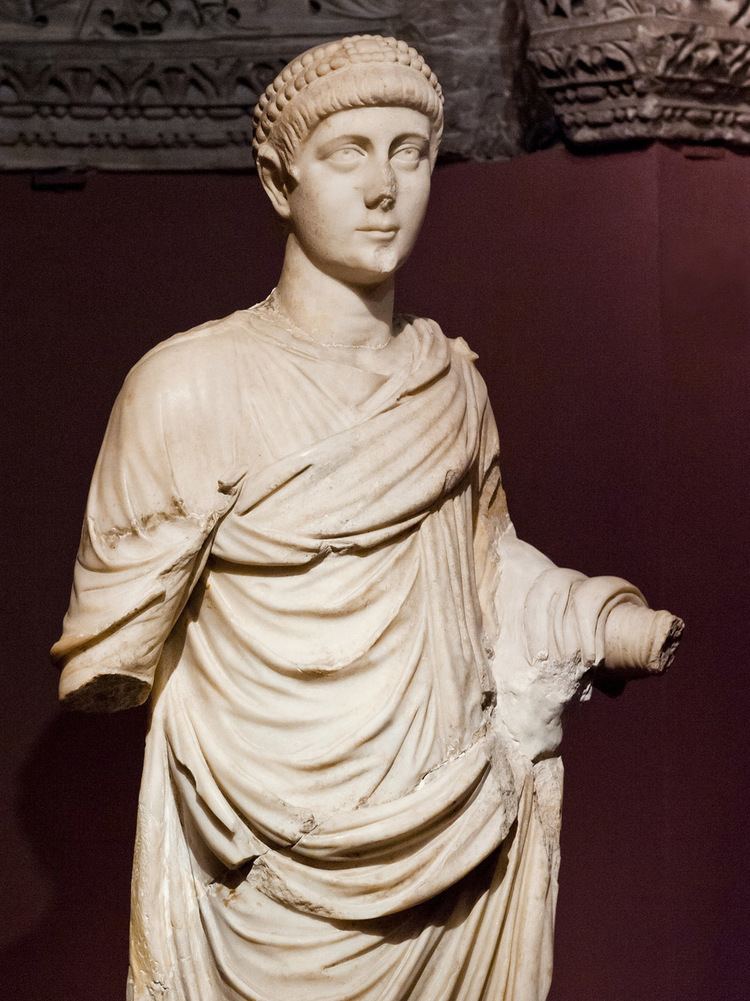
Valentinian II
Early life and accession (371–375)
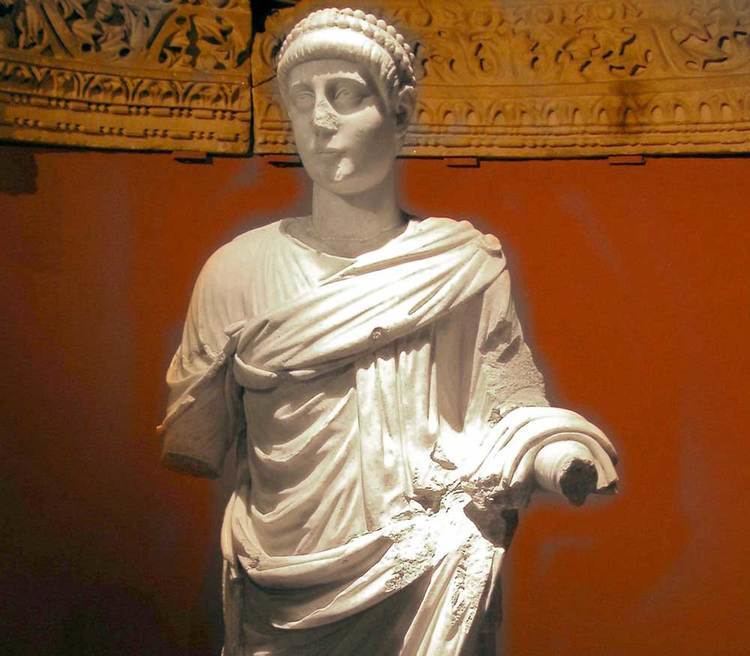
Flavius Valentinianus was born to Emperor Valentinian I and his second wife, Justina. He was the half-brother of Valentinian’s other son, Gratian, who had shared the imperial title with his father since 367. He had three sisters Galla, Grata and Justa. The elder Valentinian died on campaign in Pannonia in 375. Neither Gratian (then in Trier) nor his uncle Valens (emperor for the East) were consulted by the army commanders on the scene. Instead of merely acknowledging Gratian as his father’s successor, Valentinian I’s generals acclaimed the four-year-old Valentinian augustus on 22 November 375. The army, and its Frankish general Merobaudes, may have been uneasy about Gratian's lack of military ability, and so raised a boy who would not immediately aspire to military command.
Reign from Milan (375–387)
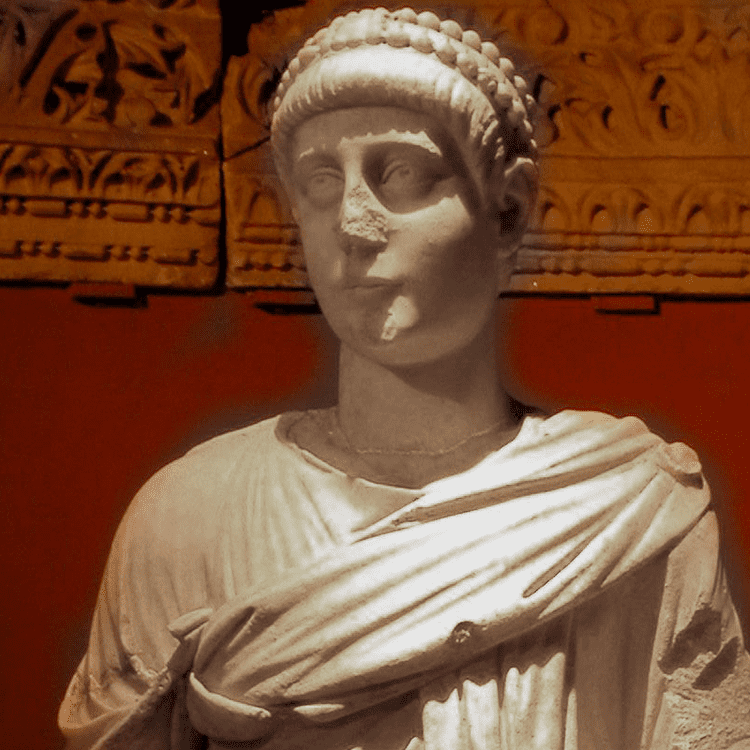
Gratian, forced to accommodate the generals who supported his half-brother, governed the trans-alpine provinces (including Gaul, Hispania, and Britain), while Italy, part of Illyricum, and North Africa were under the rule of Valentinian. In 378, their uncle, the Emperor Valens, was killed in battle with the Goths at Adrianople, and Gratian invited the general Theodosius to be emperor in the East. As a child, Valentinian II was under the influence of his Arian mother, the Empress Justina, and the imperial court at Milan, an influence contested by the Nicene bishop of Milan, Ambrose.
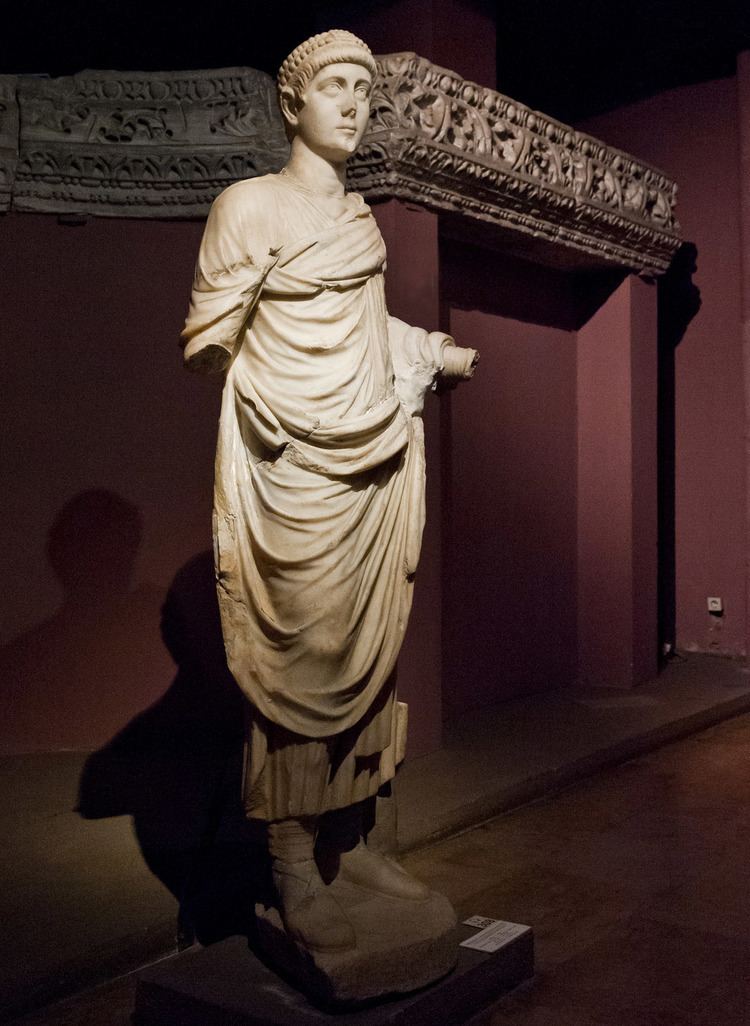
Justina used her influence over her young son to oppose the Nicean party which was championed by Ambrose. In 385 Ambrose, backed by Milan's populace, refused an imperial request to hand over the Portian basilica for the use of Arian troops. In 386 Justina and Valentinian received the Arian bishop Auxentius, and Ambrose was again ordered to hand over a church in Milan for Arian usage. Ambrose and his congregation barricaded themselves inside the church, and the imperial order was rescinded. Magnus Maximus used the emperor’s heterodoxy against him, and even his eventual protector, Theodosius, cast aspersions on his Arianism. Valentinian also tried to restrain the despoiling of pagan temples in Rome. Buoyed by this instruction, the pagan senators, led by Aurelius Symmachus, the Prefect of Rome, petitioned in 384 for the restoration of the Altar of Victory in the Senate House, which had been removed by Gratian in 382. Valentinian, at the insistence of Ambrose, refused the request and, in so doing, rejected the traditions and rituals of pagan Rome to which Symmachus had appealed.
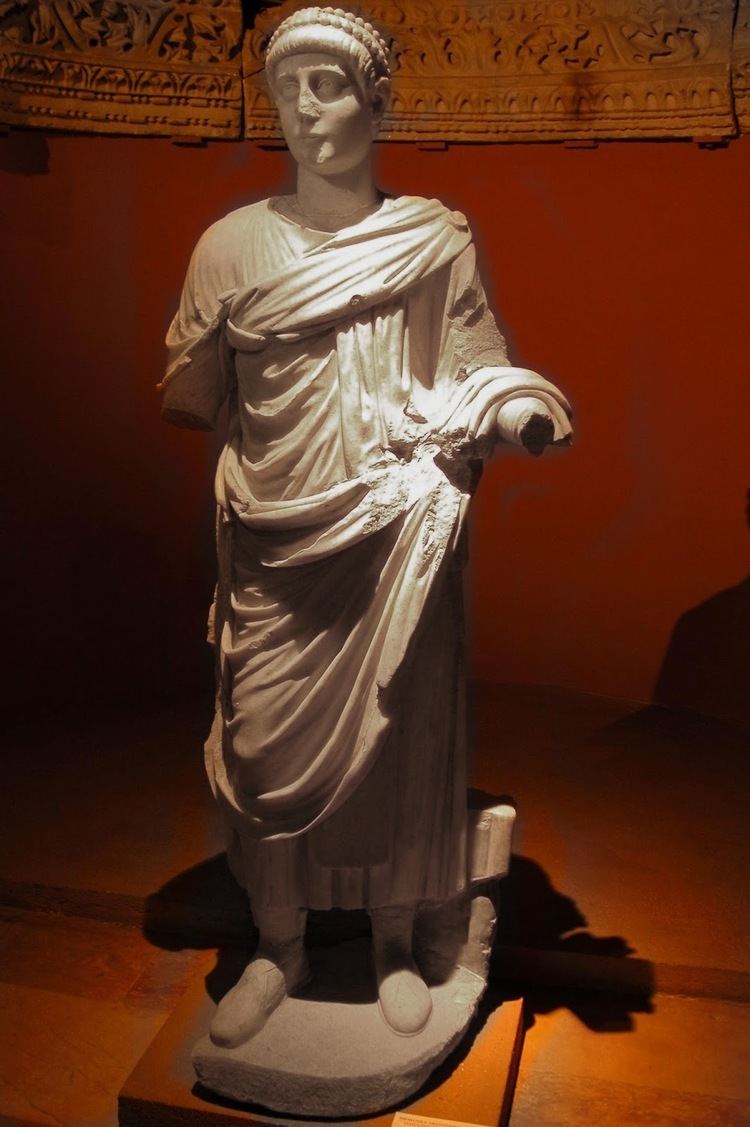
In 383, Magnus Maximus, commander of the armies in Britain, declared himself Emperor and established himself in Gaul and Hispania. Gratian died while fleeing him. For a time the court of Valentinian, through the mediation of Ambrose, came to an accommodation with the usurper, and Theodosius recognized Maximus as co-emperor of the West. In 386 or 387, Maximus crossed the Alps into the Po valley and threatened Milan. Valentinian II and Justina fled to Theodosius in Thessalonica. The latter came to an agreement, cemented by his marriage to Valentinian’s sister Galla, to restore the young emperor in the West. In 388, Theodosius marched west and defeated Maximus. Although he was to appoint both of his sons emperor (Arcadius in 383, Honorius in 393), Theodosius remained loyal to the dynasty of Valentinian I.
Reign from Vienne (388–392)

After the defeat of Maximus, Theodosius remained in Milan until 391. Valentinian took no part in Theodosius's triumphal celebrations over Maximus. Valentinian and his court were installed at Vienne in Gaul, while Theodosius appointed key administrators in the West and had coins minted, which implied his guardianship over the 17-year-old. Justina had already died, and Vienne was far away from the influence of Ambrose. Theodosius's trusted general, the Frank Arbogast, was appointed magister militum for the Western provinces (bar Africa) and guardian of Valentinian. Acting in the name of Valentinian, Arbogast was actually subordinate only to Theodosius. While the general campaigned successfully on the Rhine, the young emperor remained at Vienne, in contrast to his warrior father and his older brother, who had campaigned at his age. Arbogast's domination over the emperor was considerable, and the general even murdered Harmonius, a friend of Valentinian suspected of taking bribes, in the emperor's presence.

The crisis reached a peak when Arbogast prohibited the emperor from leading the Gallic armies into Italy to oppose a barbarian threat. Valentinian, in response, formally dismissed Arbogast. The latter ignored the order, publicly tearing it up and arguing that Valentinian had not appointed him in the first place. The reality of where the power lay was openly displayed. Valentinian wrote to Theodosius and Ambrose complaining of his subordination to his general. In explicit rejection of his earlier Arianism, he invited Ambrose to come to Vienne to baptize him.
On 15 May 392, Valentinian was found hanged in his residence in Vienne. Arbogast maintained that the emperor’s death was suicide. Most sources agree, however, that Arbogast murdered him with his own hands, or paid the Praetorians. Zosimus writing in the early sixth century from Constantinople, states that Arbogast had Valentinian murdered; ancient authorities being divided in their opinion. Ambrose's eulogy is the only contemporary Western source for Valentinian's death. It is ambiguous on the question of the emperor's death, which is not surprising, as Ambrose represents him as a model of Christian virtue. Suicide, not murder, would make the bishop dissemble on this key question.
The young man’s body was conveyed in ceremony to Milan for burial by Ambrose, mourned by his sisters Justa and Grata. He was laid in a porphyry sarcophagus next to his brother Gratian, most probably in the Chapel of Sant'Aquilino attached to San Lorenzo.
At first Arbogast recognized Theodosius's son Arcadius as emperor in the West, seemingly surprised by his charge's death. After three months, during which he had no communication from Theodosius, Arbogast selected an imperial official, Eugenius, as emperor. Theodosius initially tolerated this regime but, in January 393, elevated the eight-year-old Honorius as augustus to succeed Valentinian II. Civil war ensued and, in 394, Theodosius defeated Eugenius and Arbogast at the Battle of Frigidus River.
Significance
Valentinian himself seems to have exercised no real authority, and was a figurehead for various powerful interests: his mother, his co-emperors, and powerful generals. Since the Crisis of the Third Century, the empire had been ruled by powerful generals, a situation formalised by Diocletian and his collegiate system. While Constantine I and his sons had been strong military figures, they had also re-established the practice of hereditary succession, adopted by Valentinian I. The obvious flaw in these two competing requirements came in the reign of Valentinian II, a child. His reign was a harbinger of the fifth century, when children or nonentities, reigning as emperors, were controlled by powerful generals and officials.
